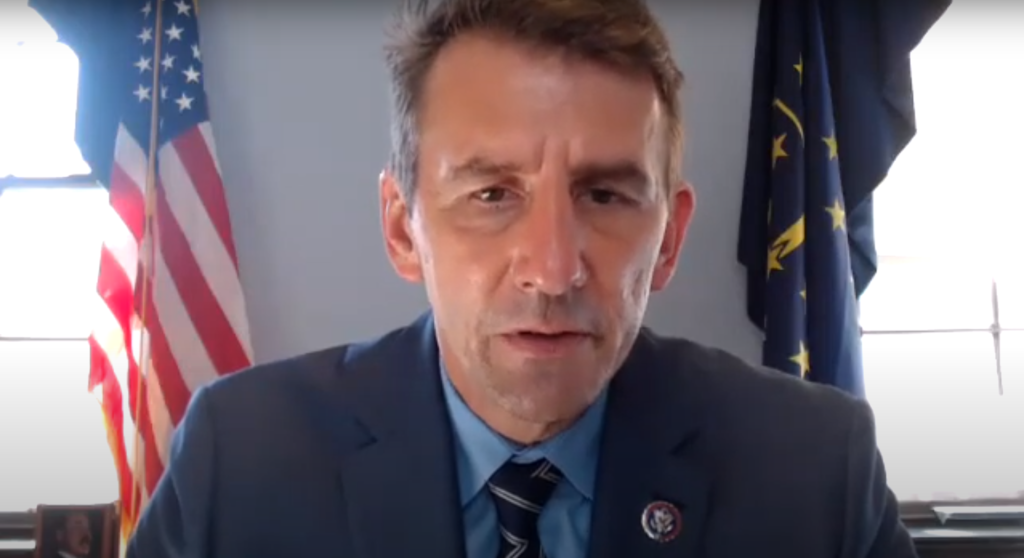
America’s steel industry is the foundation of our economic and national security. Removing Section 232 without addressing the larger overcapacity problem would be devastating.
Reps. Conor Lamb (D-Pa.), Frank Mrvan (D-Ind.), Mike Bost (R-Ill.) and Rick Crawford (R-Ark.), along with steel industry executives and United Steelworkers International President Tom Conway, convened on Thursday to discuss how strong trade policy can support America’s steel industry.
As was attested during the virtual discussion, the American steel industry is the foundation of our nation’s economy and national security. And though American steel manufacturers have found stable footing since the application of Section 232 trade action in 2018, a global overcapacity crisis looms over the industry.
“Frankly, it’s important for us to remember that this is a decades-old problem and that 232 has been helpful, and it has sort of helped to reset how we think about steel and how we think about the domestic industry. And we can’t afford to let that sort of slide back,” said Conway. “This industry now is running the way it ought to run – at about an 85% capacity.”
As the economic thinktank Economic Policy Institute (EPI) reported in March, the benefits of Section 232 trade action on imported steel were almost instantaneous when implemented in 2018. By 2019, Section 232’s 25% tariff had curbed steel importation by 27%.
Section 232’s ability to hold back the flood of cheap steel imported into the U.S. lent domestic steelmakers some security. This led to the reopening of idled plants in at least 15 states, the investment of more than $16 billion in new or upgraded steel facilities, and the creation of at least 3,200 steel jobs. Just this September, U.S. Steel announced plans to build a new $3 billion mini-mill, and Nucor Corp. has said it will build a $2.7 billion sheet steel plant, the company’s largest construction project to date.
“I think it’s critical we sustain the transformation,” said Steel Dynamics CEO Mark Millett. “Our industry has performed, and all we ask is create that level playing field going forward.”
All of this progress can be obliterated if cheap imports are again allowed to pour into our nation.
There have been calls from business groups and foreign nations for Section 232 exemptions. European Union diplomats have aired their frustrations with Section 232 tariffs during this week’s EU-US Trade and Technology Council. But, as Conway and the executives commented during the roundtable, though China is a major contributor to the global steel overcapacity crisis, our European allies also play a role.
“We have problems coming out of China. We have problems coming out of Russia. But there are problems within Europe as well. There are other countries who have been not particularly great actors,” said Conway. “As we think about this, we’ve got to stick now to a long-term fix for the U.S. steel industry, for this economy.”
Importantly, as the U.S. steel industry has stabilized, not only have thousands of jobs been recovered, domestic steel producers have channeled their profits into improving and building cutting-edge mills that lead the world in manufacturing cleaner steel.
“There’s a global race on to decarbonize steel. And developing and deploying those technologies needed to decarbonize requires collaboration, but it’s a matter of competitiveness,” U.S. Steel Senior Vice President Richard Fruehauf said. “In Canada and Europe, governments are quickly stepping up to support and fund the multi-billion-dollar transition needed to achieve steel decarbonization. In the U.S., as others have already said, we are ahead. … But we have to accelerate.”
Nucor Corp. General Counsel Greg Murphy said, “Steel produced in the United States generates a small fraction of the emissions of steel produced and imported from other major steel-producing regions, including those in the E.U. and in Asia. Nucor and the industry’s investments will enable us to actually reduce the global carbon footprint even further. By lowering imports, the Section 232 measures have actually effectively reduced the carbon footprint in the U.S. and supported lower-greenhouse-gas-intensity steels produced right here at home.”
However, if the Biden administration allows the U.S. steel industry to fall victim to the global steel overcapacity crisis again, hundreds of thousands of workers will be at risk, along with their families and communities.
“These are real families. These are real jobs,” said Mrvan. “We’ve talked all about hundreds of thousands of jobs in the backbone. We all agree upon that — that the steel industry needs to be protected. Section 232 is extremely important.”
